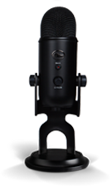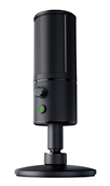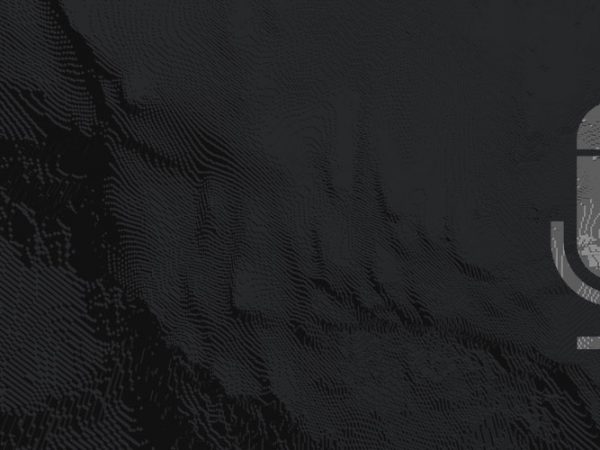Whether you’re a musical artist, voice over artist, gamer or video producer, the USB mic allows you to capture the audio you need in a fast, hassle free manner.
In this guide, we’re going to pit the Razer Seiren X Vs Blue Yeti to see which of these popular USB mics is the better overall choice.
Professional quality sound
Blue Yeti

There are few limitations with the Blue Yeti. Live rock shows will be just as clear as a low-key one-on-one interview. Though to be sure, it’s in the concert hall where the Yeti shines.
Great audio resolution
Razer Seiren X

This is a great mic for recording interviews, voice overs, podcasts or live talk shows for broadcast at a later date. The recording resolution enables it to stand apart from the competition.
Clash of the Titans: The Seiren and the Yeti Go Head-to-Head
There’s been a lot of digital ink spilled discussing the relative merits of these two powerhouse USB mics. Some reviewers give the nod to the Seiren. Others to the Yeti.
We decided to test them both and see for ourselves which one is still standing at the end.
Things We’ll Be Looking For
We’re going to put both mics under the microscope to see which one lives up to the hype and which is basking in reflected glory. Among other things, we’ll see:
- If the Seiren’s high sample rate makes a difference.
- If the Blue Yeti can handle the rigors of live recording.
- Whether the Seiren is worth the steep asking price.
- Whether the Blue Yeti’s proprietary condensers are a game changer.
The Specs
First let’s breakdown the technical info for both mics.
| Feature | Blue Yeti | Razer Seiren X |
|---|---|---|
| Sample Rate | 48 KHz | 192 KHz |
| Polar Patterns | Stereo, Bidirectional, Cardioid, Omnidirectional | Supercardiod |
| Min/Max Frequency Response | 20 Hz, 20 KHz | 20 Hz, 20 KHz |
| Capsules | 3 Blue-proprietary 14mm condenser capsules | 3 standard 14mm condenser capsules |
| Max Sound Pressure Level (SPL) | 120 dB | 120 dB |
| Power Requirements | Consumption: 5V 150mA | Consumption: 5V 500mA |
| System Requirements | Windows 7, 8.1, or 10 macOS 10.10 or higher USB 2.0/3.0 | Windows 7, 8, 10. Mac OS 10.8 onwards. PlayStation4 (Seirēn X PS4) USB 2.0/3.0 |
| Notes | Good for vocals, live music, voiceovers, podcasting, in the field recording, news conferences and more. | Zero latency headphone monitoring, hassle-free setup, 4 polar patterns, high resolution sound. |
| More Specs & Reviews | Read more | Read more |

Recording Patterns
The recording – or “polar” – pattern denotes the active field within which the mic is picking up sound.
So for instance “omnidirectional” means that, when set to that polar pattern, the mic is picking up sound from all around it.
In this case, both mics offer the same 4 recording patterns (cardioid, stereo, bidirectional and omnidirectional).
Polar Patterns Offered by Blue Yeti
Blue Yeti employs a proprietary tri-capsule mic that makes it easy to switch between its 4 polar patterns.
This allows you to adjust on the fly to get whatever sound you need. Though most people will use the cardioid.
Polar Patterns Offered by Razer Seiren X
The Razer Seiren X offers a unidirectional polar pattern, aka only one polar pattern. Although they employ industry standard condenser capsules to do so.
Of course, with the substantially higher sample rate available on the Razer, any advantage ceded to the proprietary capsules of the Blue Yeti is neutralized.
Maximum Sound Pressure Level (SPL)
There’s a common misconception that the SPL is the maximum amount of sound a mic can take without burning out.
In fact, SPL is just the maximum sound pressure levels the mic can take before distortion sets in. Both mics offer 120 dB SPL.
SPL of the Blue Yeti
Blue Yeti can withstand 120 dB SPL before things start to get jiggy. That’s equivalent to a chain saw (close up) or a very loud rock concert.
Our testing indicates you may be able to push the Blue Yeti juuusst a bit beyond this threshold before it starts to complain.
SPL of the Razer Seiren X
The Razer Seiren X shares the 120 dB SPL max level of the Blue Yeti, but things tend to start falling apart before you reach that plateau. Especially in live music situations.
But really, you’ll likely be able to count on one hand the number of times you’ll find yourself facing a 120 dB wall of sound.
Frequency Response Rate
Both mics offer a frequency response rate of 20 Hz to 20 KHz. That is considered the normal range of the human ear.
For the most part it’s incredibly unlikely you’ll need to pick up anything lower or higher than those frequencies, unless you’re recording audio for elephants or dogs.
Frequency Response Rate of the Blue Yeti
As we said both mics offer a frequency response rate calibrated to the human ear. At the low end of the spectrum, the Blue Yeti does a serviceable job.
Though things can sometimes get a bit muddled when several people are talking at once. At the high end, especially in live music situations, the Blue Yeti is spot on.
Frequency Response Rate of the Razer Seiren X
In some ways the performance of the Seiren X mirrors that of the Blue Yeti.
At the low end it grabs just about everything, and at the high end (in those pesky live music situations again) you start to get a bit of aural stew.
Everything up to about 19 KHz, however, is clear as a bell.
Winner: Razer Seiren X
Why? Because chances are very few people who pick up a mic like this are doing so to record ear splitting live music.
They want it for gaming, conducting interviews, recording audio for their YouTube videos, or using their mic for streaming. And within that arena, the Razer will do a slightly better job from end to end.

Unique Features: Blue Yeti
Proprietary 14mm condenser capsules
Blue developed their own proprietary condenser capsule for the Yeti. The major benefit here is that they’re equally effective at picking up different types of sound.
Though at the same time, that advantage is somewhat undermined by the limited sample rate.
Lower Sample Rate
The fact that we’re talking about USB mics means we’re ultimately talking about computer files devouring space on your hard drive.
In that sense, the lower sample rate of 48 KHz has the advantage of not creating Godzilla files that are going to lay waste to your computer memory.
Unique Features: Razer Seiren X
Higher Response Rate
Let’s look at things from a perfectionist’s point of view now. Sure, you don’t want to bog down your hard drive with ginormous audio files.
But at the same time, anything worth doing is worth doing right. Right? And the 192 KHz response rate of the Seiren X will make sure you capture all the nuance and texture of natural sound.
Zero Latency Monitoring
The Razer Seiren X offers zero latency headphone monitoring. Those who like to keep track of what’s being recorded in real time will appreciate this feature.
So will anyone who isn’t a fan of the disorienting experience of hearing things in their headphones that don’t match up precisely to what’s going on in front of them.
Winner: Razer Seiren X
Why? For the reasons outlined above.
Razer Seiren X vs Blue Yeti: Pros and Cons
Below is a breakdown of the good and the bad of each of these recording devices. For a quick overview of the perks and downfalls read on and you’ll soon have an idea of which mic will work best for you.
Pros of the Yeti
- Has a clear advantage when it comes to recording high decibel live performances.
- The lower sample rate won’t create enormous files that devour your hard drive.
- The lower price means you’ll have more money to spend on pizza.
- The propriety condenser capsules do a good job distinguishing between sounds.
Cons of the Yeti
- Any advantage provided by the condenser capsules is neutralized by the lower sample rate.
- It’s ugly as the day is long (in our humble opinion).
- It’s also unnaturally large for some reason we haven’t been able to figure out.
- The sound quality, while generally very good, isn’t as warm as you’ll get with something like the Audio Technica AT2020.
Pros of the Seiren X
- The higher response rate allows for fuller, more natural sound.
- Slightly more compact design and more attractive profile.
- The hassle-free plug and play setup is refreshing.
- Does and outstanding job at the low end and middle of the sound spectrum.
Cons of the Seiren X
- More expensive than the Blue Yeti.
- Isn’t great for recording loud live music.
Final Verdict
Both mics share some important features, but in the battle between the Razer Seiren x vs Blue Yeti, it’s in the practical details where separation occurs.
The Blue Yeti and its proprietary condenser capsules do a good job holding their own when the audio action is fast and furious.
But beyond that, it doesn’t produce the same rich, natural sound the Seiren X does, especially when it comes to conversations and such.
The Yeti is also aptly named because it’s about the size of that mythical creature. It also takes a bit longer to set up and it’s not really built for gaming like the Razer.
For all these reasons, if it’s our money, we’re spending it on the Razer Seiren X. Yes it costs a bit more, but in this case you get what you pay for.




